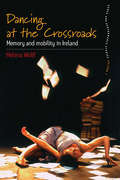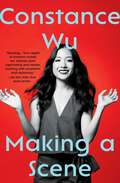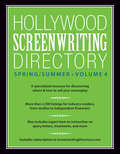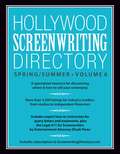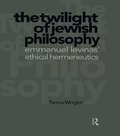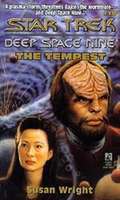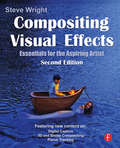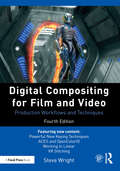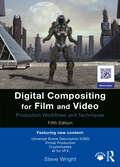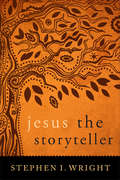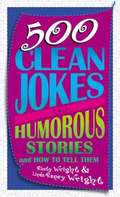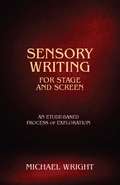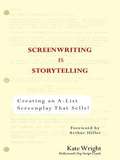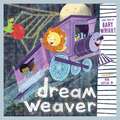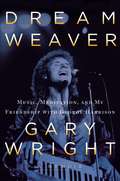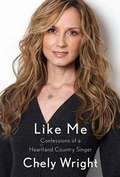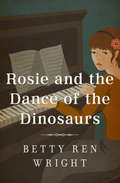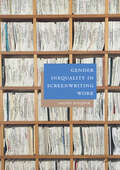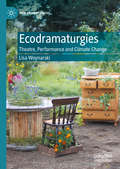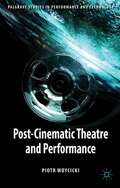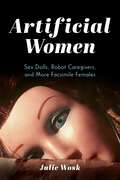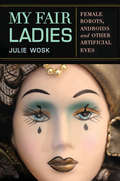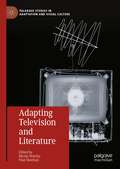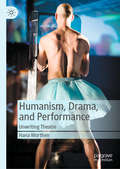- Table View
- List View
Truth Facts: The Truthiest Truths and Factiest Facts of Everyday Life
by Mikael Wulff Anders MorgenthalerIn an age of "alternative facts," we all need a little more truth in our lives. And humor.Welcome to Truth Facts, a collection of information graphics that poke fun at societal quirks and everyday absurdities through charts and graphs. Danish writer Mikael Wulff and cartoon artist Anders Morgenthaler have taken the internet by storm with their humorous and perceptive infographics that turn commonplace phenomena into clever commentary. In distilling keen observations about universal experiences into elegant charts and graphs, Truth Facts gets to the heart of the paradoxical and wonderful world we all share, and puts modern reality into perspective in a funny and visceral way.These simple, colorful graphics explore societal quirks and everyday oddities, such as what happens when you call customer service (anything but service), when banks are open (only when you’re at work), the biggest lies on the internet (“LOL”), and much more.Playfully teasing readers even as it explores themes like perception vs. reality, this compendium of life’s truthiest facts prods us to laugh at ourselves, own up to our shortfalls, accept the strangeness of the world we live in, and continue on—happier and more connected to one another than ever before.
Dancing At The Crossroads
by Helena WulffDancing at the crossroads used to be young people's opportunity to meet and enjoy themselves on mild summer evenings in the countryside in Ireland until this practice was banned by law, the Public Dance Halls Act in 1935. Now a key metaphor in Irish cultural and political life, "dancing at the crossroads" also crystallizes the argument of this book: Irish dance, from Riverdance (the commercial show) and competitive dancing to dance theatre, conveys that Ireland is to be found in a crossroads situation with a firm base in a distinctly Irish tradition which is also becoming a prominent part of European modernity.
Making a Scene
by Constance WuNamed a Most Anticipated Book by Time and Associated Press! From actor Constance Wu, a powerful and poignant memoir-in-essays.Growing up in the friendly suburbs of Richmond, Virginia, Constance Wu was often scolded for having big feelings or strong reactions. &“Good girls don&’t make scenes,&” people warned her. And while she spent most of her childhood suppressing her bold, emotional nature, she found an early outlet in local community theater—it was the one place where big feelings were okay—were good, even. Acting became her refuge, her touchstone, and eventually her vocation. At eighteen she moved to New York, where she&’d spend the next ten years of her life auditioning, waiting tables, and struggling to make rent before her two big breaks: the TV sitcom Fresh Off the Boat and the hit film Crazy Rich Asians. Through raw and relatable essays, Constance shares private memories of childhood, young love and heartbreak, sexual assault and harassment, and how she &“made it&” in Hollywood. Her stories offer a behind-the-scenes look at being Asian American in the entertainment industry and the continuing evolution of her identity and influence in the public eye. Making a Scene is an intimate portrait of pressures and pleasures of existing in today&’s world.
Hollywood Screenwriting Directory Spring/Summer Volume 4: A Specialized Resource for Discovering Where & How to Sell Your Screenplay
by Writer's Store EditorsThe Hollywood Screenwriting Directory is a specialized resource for discovering where and how to sell your screenplay. It contains over 2,500 listings for Industry insiders such as studios, production companies, and independent financiers - plus, pointers to help you create a quality screenplay submission. The Hollywood Screenwriting Directory includes a free subscription to ScreenwritingDirectory.com, where screenwriters can access updated listings and market their projects to Industry Professionals.
Hollywood Screenwriting Directory Spring/Summer Volume 4
by Writer's Store EditorsThe Hollywood Screenwriting Directory is a specialized resource for discovering where and how to sell your screenplay. It contains over 2,500 listings for Industry insiders such as studios, production companies, and independent financiers - plus, pointers to help you create a quality screenplay submission. The Hollywood Screenwriting Directory includes a free subscription to ScreenwritingDirectory.com, where screenwriters can access updated listings and market their projects to Industry Professionals.
Twilight of Jewish Philosophy
by Wright Dr Tamra WrightFirst Published in 1999. Routledge is an imprint of Taylor & Francis, an informa company.
S/trek Ds9 #19 The Tempest (Star Trek #19)
by Susan WrightWhen a ferocious plasma storm strikes the entire Bajoran system, Deep Space NineTMbecomes a port under siege, filled to overflowing with stranded space travelers, unpredictable aliens, and Klingon smugglers. Wof and Odo find themselves tested to the limit as they struggle to control the chaos that has consumed the station. But even greater danger faces Dax and botanist Keiko O' Brian when they must fly a runabout into the very heart of the storm - and encounter a stange new form of life!
Compositing Visual Effects: Essentials for the Aspiring Artist (Focal Visual Effects And Animation Ser.)
by Steve WrightPut the essential concepts and techniques of digital compositing to work for you without the need of a single mathematical equation. Compositing Visual Effects is lavishly illustrated with hundreds of film shots, figures, illustrations, and diagrams to help the visual reader gain a valuable vocabulary and understanding of the full range of visual effects, in which digital compositing plays a key role. Beginning with an inspirational tour of the scope and magnitude of digital compositing, you get a solid overview of the kinds of digital effects routinely executed today. See how CGI is composited with live action, how set extensions are done, and what a match-move shot is. Following that you learn each of the key applications of digital compositing, which include bluescreen compositing, bullet-time shots, motion tracking, and rotoscoping. The subsequent chapters dig down into each of the major digital compositing applications, introducing the fundamental concepts, and processes behind them. Learn what is easy and hard, possible and impossible, and what to expect when working on a job that entails digital compositing. New to this edition are 4 new chapters on:* 3D compositing, with lessons on what camera tracking is, how it is used to put CGI into a live-action plate, as well as live action into a 3D scene. * Stereo compositing, with descriptions of key stereoscopic terms and concepts, lessons on compositing shots that were filmed in stereo (both bluescreen and CGI), as well as the stereo conversion process when a flat 2D movie is converted to a stereo 3D movie* RED and Digital Capture with Log Images, including log image formats. This is a very hot topic these days. Colleges hang around video because it is cheaper. Film is still big in the real world of production.* Tracking an entire project from start to finishThis is in addition to robust updates on topics such as:* planar tracking, Z compositing, working with Anamorphic HD formats, mocap, and more This edition also includes a companion website with images from the book for you to work with in your own compositing exercises. An accessible introduction to a complex subject for novice and aspiring compositors, from experienced author and compositing whose compositing credits include Night at the Museum 2, Shutter Island, Solaris, Traffic, and more Full color presentation illustrating the art and techniques of the practice, provides inspiration along with instruction New to this edition is a companion website, new chapters on 3D compositing, stereo compositing, RED and digital capture with log images, and more will have you understanding the latest in compositing technology in no time
Digital Compositing for Film and Video: Production Workflows and Techniques (4th Edition) (Focal Visual Effects and Animation )
by Steve Wright<p>Written by senior compositor, technical director and master trainer Steve Wright, this book condenses years of production experience into an easy-to-read and highly-informative guide suitable for both working and aspiring visual effects artists. <p>This expanded and updated edition of Digital Compositing for Film and Video addresses the problems and difficult choices that professional compositors face on a daily basis with an elegant blend of theory, practical production techniques and workflows. It is written to be software-agnostic, so it is applicable to any brand of software. This edition features many step-by-step workflows, powerful new keying techniques and updates on the latest tech in the visual effects industry. <p><b>Workflow examples for:</b> <p> <li>Grain Management <li>Lens Distortion Management <li>Merging CGI Render Passes <li>Blending Multiple Keys <li>Photorealistic Color Correction <li>Rotoscoping</li> <p> <p><b>Production Techniques for:</b> <li>Keying Difficult Greenscreens <li>Replicating Optical Lens Effects <li>Advanced Spill Suppression <li>Fixing Discoloured Edges <li>Adding Interactive Lighting <li>Managing Motion Blur</li> <p> <p><b>With brand new information on:</b> <li>Working in linear <li>ACES Color Management <li>Light Field Cinematography <li>Planar Tracking <li>Creating Color Difference Keys <li>Premultiply vs. Unpremultiply <li>Deep Compositing <li>VR Stitching <li>3D Compositing from 2D Images <li>How Color Correction ops Effect Images <li>Color Spaces <li>Retiming Clips <li>Working with Digital Cinema Images <li>OpenColorIO</li> <p> <p>A companion website offers images from the examples discussed in the book allowing readers to experiment with the material first-hand.</p>
Digital Compositing for Film and Video: Production Workflows and Techniques
by Steve WrightWritten by senior compositor, technical director, and master trainer Steve Wright, this book condenses years of production experience into an easy-to-read and highly informative guide suitable for both working and aspiring visual effects artists. This updated edition of Digital Compositing for Film and Video addresses the problems and difficult choices that professional compositors face daily with an elegant blend of theory, practical production techniques, and workflows. It is written to be software-agnostic, so it applies to any brand of software. It features many step-by-step workflows, powerful new keying techniques, and updates on the latest tech in the visual effects industry with all-new content on artificial intelligence (AI) for visual effects (VFX), Universal Scene Description (USD), Virtual Production, and Cryptomattes. A companion website offers images from the examples discussed in the book allowing readers to experiment with the material first-hand. This edition also adds Nuke workflows to the companion website for the first time.
Jesus The Storyteller
by Stephen I. WrightWhile it is widely acknowledged that Jesus told stories, there has not been much focus on why he did so and how these stories contributed to his ministry. Stephen Wright approaches this topic afresh to analyze how considering the parables as "stories" can help our understanding of Jesus and his mission. Wright begins by looking for insights in scholarship from recent decades on the parables and the historical Jesus. He goes on to imagine how these stories would have resonated with hearers in each of the Synoptic Gospels and considers the dynamics between Jesus and his hearers in different locations like Galilee and Jerusalem. Finally, Wright considers the purpose of these parables as an element of Jesus' ministry and looks at Jesus himself as a storyteller. This book will provide a solid basis for understanding why Jesus spoke in parables and how this distinctive style of speech functioned in his ministry.
500 Clean Jokes and Humorous Stories, and How to Tell Them
by Rusty Wright Linda Raney WrightDiscover how to use humor to improve all of your relationships and become a more dynamic communicator, whether one-on-one or in larger groups.
Sensory Writing for Stage and Screen: An Etude-Based Process of Exploration
by Michael WrightThrough a series of systematic explorations across a wide range of scenarios, Sensory Writing for Stage and Screen offers script writers exercises for attending to their own sensory experiences as a means to exploring the sensory experiences—and worlds—of the characters they create.
Screenwriting is Storytelling: Creating an A-List Screenplay that Sells!
by Kate Wright Arthur HillerWhile most screenwriting books focus on format and structure, Kate Wright explains how to put story at the center of a screenplay. <P><P>A compelling story, complete with intriguing characters and situations created with these screenwriting tricks of the trade can become a box office blockbuster film. Screenwriters will learn: - Developing themes within the plot - Using structure to define the story - Creating memorable characters - Establishing moral dilemmas and conflicts - Achieving classic elements of storytelling in a three-act dramatic structure - Mastering different genres .
Dream Weaver: A Children's Picture Book (LyricPop #0)
by Gary WrightGary Wright's hit song is reimagined as a fantastical picture book to delight dreamers of all ages. "Oo-hoo dream weaver I believe you can get me through the night Oo-hoo dream weaver I beli
Dream Weaver: A Memoir; Music, Meditation, and My Friendship with George Harrison
by Gary WrightMusic legend Gary Wright reflects on his professional collaboration, friendship, and spiritual journey with "quiet Beatle" George Harrison. Best known for his multiplatinum hits "Dream Weaver" and "Love is Alive," Gary Wright came to prominence as a singer and songwriter during the golden age of rock in the 1970s. What is not as well known to the public, however, is Wright's spiritual side. At the heart of this memoir is the spiritual conversion and journey that Wright experienced alongside his close friend George Harrison. Until Harrison's death in 2001, the two spent decades together writing songs, eating Indian fare, talking philosophy, and gardening. In addition to featuring lyrics to a never-released recording of a song cowritten by Wright and George Harrison in 1971, titled "To Discover Yourself," this memoir includes a cache of never-before-seen photos. Also available is a deluxe e-book featuring an audio recording of "To Discover Yourself."
Like Me: Confessions of a Heartland Country Singer
by Chely WrightChely Wright, singer, songwriter, country music star, writes in this moving, telling memoir about her life and her career; about growing up in America's heartland, the youngest of three children; about barely remembering a time when she didn't know she was different. She writes about her parents, putting down roots in their twenties in the farming town of Wellsville, Kansas, Old Glory flying atop the poles on the town's manicured lawns, and being raised to believe that hard work, honesty, and determination would take her far. She writes of making up her mind at a young age to become a country music star, knowing then that her feelings and crushes on girls were "sinful" and hoping and praying that she would somehow be "fixed. " ("Dear God, please don't let me be gay. I promise not to lie. I promise not to steal. I promise to always believe in you. . . Please take it away. ") We see her, high school homecoming queen, heading out on her own at seventeen and landing a job as a featured vocalist on the Ozark Jubilee (the show that started Brenda Lee, Red Foley, and Porter Wagoner), being cast in Country Music U. S. A. , doing four live shows a day, and - after only a few months in Nashville - her dream coming true, performing on the stage of the Grand Ole Opry. . . She describes writing and singing her own songs for producers who'd discovered and recorded the likes of Reba McEntire, Shania Twain, and Toby Keith, who heard in her music something special and signed her to a record contract, releasing her first album and sending her out on the road on her first bus tour. . . She writes of sacrificing all for a shot at success that would come a couple of years later with her first hit single, "Shut Up and Driver". . . her songs (from her fourth album, Single White Female) climbing the Billboard chart for twenty-nine weeks, hitting the #1 spot. . . She writes about the friends she made along the way - Vince Gill, Brad Paisley, and others - writing songs, recording and touring together, some of the friendships developing into romantic attachments that did not end happily. . . Keeping the truth of who she was clutched deep inside, trying to ignore it in a world she longed to be a part of - and now was - a world in which country music stars had never been, could not be, openly gay. . . She writes of the very real prospect of losing everything she'd worked so hard to create. . . doing her best to have a real life - her best not good enough. . . And in the face of everything she did to keep herself afloat, she writes about how the vortex of success and hiding who she was took its toll: her life, a tangled mess she didn't see coming, didn't want to; and, finally, finding the guts to untangle herself from the image of the country music star she'd become, an image steeped in long-standing ideals and notions about who - and what - a country artist is, and what their fans expect them to be. . . "I am a songwriter," she writes. "I am a singer of my songs - and I have a story to tell. As I've traveled this path that has delivered me to where I am today, my monument of thanks, paying honor to God, remains. I will do all I can with what I have been given. . . " Like Meis fearless, inspiring, true.
Rosie and the Dance of the Dinosaurs
by Betty Ren WrightThe big piano recital is coming up soon, and Rosie feels anything but ready—&“captures the down-to-earth rhythms of suburban life, spiced with humor&” (Kirkus Reviews). Even though Rosie has only nine fingers, she&’s always managed well. Until now. For some reason, she can&’t master the piano solo she&’s been rehearsing for the annual recital. It&’s called &“The Dance of the Dinosaurs,&” and it&’s hard! As the recital draws near, Rosie is desperate. Why does everything seem so much more difficult now? Is it because she misses her father? Since he moved to Milwaukee to take a new job, Rosie&’s been miserable, and her mother has been acting kind of strange. Or is Rosie having trouble because she&’s worried about the burglar who&’s been secretly visiting her house? Then, too, there&’s Mary Jean, the new girl in town. Not only is she rich and pretty, but she plays the piano beautifully. In the weeks before the recital, Rosie fights some hard battles. To her surprise, she discovers that having nine fingers isn&’t such a bad thing after all.
Gender Inequality in Screenwriting Work
by Natalie WreyfordThis is the first book to critically examine the recruitment and working practices of screenwriters. Drawing on interviews with screenwriters and those that employ them, Natalie Wreyford provides a deep and detailed understanding of entrenched gender inequality in the UK film industry and answers the question: what is preventing women from working as screenwriters? She considers how socialised recruitment and gendered taste result in exclusion, and uncovers subtle forms of sexism that cause women’s stories and voices to be discounted. Gender Inequality in Screenwriting Work also reveals the hidden labour market of the UK film industry, built on personal connections, homophily and the myth of meritocracy. It is essential reading for students and scholars of gender, creative industries, film and cultural studies, as well as anyone who wants to understand why women remain excluded from many key roles in filmmaking.
Ecodramaturgies: Theatre, Performance and Climate Change (New Dramaturgies)
by Lisa WoynarskiThis book addresses theatre’s contribution to the way we think about ecology, our relationship to the environment, and what it means to be human in the context of climate change. It offers a detailed study of the ways in which contemporary performance has critiqued and re-imagined everyday ecological relationships, in more just and equitable ways. The broad spectrum of ecologically-oriented theatre and performance included here, largely from the UK, US, Canada, Europe, and Mexico, have problematised, reframed, and upended the pervasive and reductive images of climate change that tend to dominate the ecological imagination. Taking an inclusive approach this book foregrounds marginalised perspectives and the multiple social and political forces that shape climate change and related ecological crises, framing understandings of the earth as home. Recent works by Fevered Sleep, Rimini Protokoll, Violeta Luna, Deke Weaver, Metis Arts, Lucy + Jorge Orta, as well as Indigenous activist movements such as NoDAPL and Idle No More, are described in detail.
Post-Cinematic Theatre and Performance
by Piotr WoycickiA cinema without cameras, without actors, without screen frames and without narratives almost seems like an antithetical impossibility of what is usually expected from a cinematic spectacle. This book defines an emergent field of post-cinematic theatre and performance, challenging our assumptions and expectations about theatre and film.
Artificial Women: Sex Dolls, Robot Caregivers, and More Facsimile Females
by Julie WoskWhat distinguishes humanity from artificial beings? What do constructed creatures tell us about ourselves? From sex dolls to Siri, talking Barbies to robotic mothers, Artificial Women explores the ways in which today's simulated females—both real and fictional—reflect and expose our own ideas about gender and female identity. Join Julie Wosk as she probes the realm of compliant sex workers, nurturing caretakers, genial servants, and rebellious creations in film, television, literature, art, photography, and current developments in robotics. These modern-day Galateas must embrace their own synthetic nature while also striving for authenticity and autonomy, all the while foregrounding gender stereotypes and changing perceptions of women and their roles. They embody the paradoxes and tensions that continue to arise in our increasingly simulated world, where the lines between the real and the virtual only continue to blur. As these "artificial women" become ever more lifelike, so too do the questions they raise become more provocative, and more illuminating of our own conceptions and conventions. Artificial Women pushes the boundaries of gender, sexuality, and culture studies to consider new digital technologies, artificial intelligences, and burgeoning simulations.
My Fair Ladies
by Julie WoskThe fantasy of a male creator constructing his perfect woman dates back to the Greek myth of Pygmalion and Galatea. Yet as technology has advanced over the past century, the figure of the lifelike manmade woman has become nearly ubiquitous, popping up in everything from Bride of Frankenstein to Weird Science to The Stepford Wives. Now Julie Wosk takes us on a fascinating tour through this bevy of artificial women, revealing the array of cultural fantasies and fears they embody. My Fair Ladies considers how female automatons have been represented as objects of desire in fiction and how "living dolls" have been manufactured as real-world fetish objects. But it also examines the many works in which the "perfect" woman turns out to be artificial--a robot or doll--and thus becomes a source of uncanny horror. Finally, Wosk introduces us to a variety of female artists, writers, and filmmakers--from Cindy Sherman to Shelley Jackson to Zoe Kazan--who have cleverly crafted their own images of simulated women. Anything but dry, My Fair Ladies draws upon Wosk's own experiences as a young female Playboy copywriter and as a child of the "feminine mystique" era to show how images of the artificial woman have loomed large over real women's lives. Lavishly illustrated with film stills, artwork, and vintage advertisements, this book offers a fresh look at familiar myths about gender, technology, and artistic creation.
Adapting Television and Literature (Palgrave Studies in Adaptation and Visual Culture)
by Blythe Worthy Paul SheehanAdapting Television and Literature is an incisive collection of essays that explores the growing sub-category of television adaptations of literature and poetics. Each chapter questions inflexible notions of film / literature and adaptation / intertext, focusing judiciously on emergent or overlooked media and literary forms. These lines of enquiry embrace texts both within and beyond ‘adaptation proper’, to reveal the complex relationships between literary works, television adaptations, and related dialogues of textual interconnectivity. Adapting Television and Literature proposes, in particular, a ‘re-seeing’ of four genres pivotal to television and its history: caustic comedy, which claims for itself more freedoms than other forms of scripted television; auteurist outlaw drama, an offbeat, niche genre that aligns a fixation on lawbreakers with issues of creative control; young adult reinventions that vitalise this popular, yet under-examined area of television studies; and transcultural exchanges, which highlight adaptations beyond the white, Anglo-American programming that dominates ‘peak TV’. Through these genres, Adapting Television and Literature examines the creative resources of adaptation, plotting future paths for enquiries into television, literature and transmedial storytelling.
Humanism, Drama, and Performance: Unwriting Theatre
by Hana WorthenThis book examines the appropriation of theatre and theatrical performance by ideologies of humanism, in terms that continue to echo across the related disciplines of literary, drama, theatre, and performance history and studies today. From Aristotle onward, theatre has been regulated by three strains of critical poiesis: the literary, segregating theatre and the practices of the spectacular from the humanizing work attributed to the book and to the internality of reading; the dramatic, approving the address of theatrical performance only to the extent that it instrumentalizes literary value; and the theatrical, assimilating performance to the conjunction of literary and liberal values. These values have been used to figure not only the work of theatre, but also the propriety of the audience as a figure for its socializing work, along a privileged dualism from the aestheticized ensemble—harmonizing actor, character, and spectator to the essentialized drama—to the politicized assembly, theatre understood as an agonistic gathering.

